The PHEV version is interesting because it offers a huge electric range of over 70 miles, which has potentially massive company car tax implications for British drivers. It's also a bit more than the 62 miles you get with the C-Class' nemesis, the BMW 3 Series PHEV. So, forget the lacklustre and compromised first generation plug-in C-Class; this new version will do most daily commutes on electric power alone, and it has a useful boot as well as stacks of high-end tech.
Introduction
While the previous plug-in hybrid C-Class was a rather half-hearted retrofit in the previous generation, this time it dominates the entire design of the architecture. This allows a larger, 19kWh battery to be crammed in without hugely compromising the interior- and boot space.
Much of the PHEV hardware is borrowed from the S-Class, from which the battery, the electric motor and the charging electronics are taken. However, because the C-Class is a bit smaller and therefore lighter, the package has been trimmed down a little: The battery has a usable capacity of 19.5kWh, and the electric motor is slightly less powerful, while petrol power is from a 2.0-litre, four-cylinder unit.
The C-Class is a very old and well-established model in the compact executive car classes, with the first C-Class badged model arriving in 1993. However, Mercedes had already established itself as a world-class act in the premium car scene for some decades prior to that, with the C-Class' predecessors including the Mercedes 190E.
Range, battery and charging
The C-Class PHEV has one of the longest ranges of any plug-in hybrid, with the C300e on small wheels managing up to 71 miles according to WLTP figures, while bigger wheels (or if you go for the estate) will see that official range drop to around 65- to 68 miles from the 19kWh usable (25kWh total) lithium-ion battery. Adaptive brake regeneration helps to keep your distance from the car in front, and also reacts to upcoming junctions and speed limit changes (the latter can be switched off, if you wish), and you can choose heavier regen' responses if you wish.
Charging speeds are up to 55kW, which is great as it means you can make the most of rapid charging stations at the motorway services to get a useful top-up of electric range if you're stopping to get a coffee. Obviously you don't need to do that, if you don't want to, as you've got that 2.0-litre petrol engine to keep you going when the battery is drained, but having rapid charging does mean that you can rely on electric power as much as possible - and we're always in favour of that! It's also useful, as very few plug-in hybrid rivals offer rapid charging, so the Mercedes CCS socket and fast charging capability could be a really big selling point for those who are keen to keep emissions and costs as low as possible.
There's also the Mercedes me Charge tariff, which you can sign up to for lower, fixed price public charging at bp Pulse, IONITY and various other public charging stations. You can sign up for free, which gets you an app that allows one-tap payment at partaking charging stations, and automatic electronic receipts, or you can pay for a monthly contract that gets you cheaper, fixed-price rapid charging.
Charging at home will cost around £3.80 for a full charge on a standard domestic electricity tariff, or you can halve that by using off-peak tariffs.
Practicality and boot space
Boot space was a big compromise with the previous C-Class PHEV, but with this new platform and all-new C-Class, the boot floor is only a few centimetres higher than in the mild hybrid petrol or diesel versions, and the luggage compartment offers usefully more space; 45 litres more than before, in this saloon version, taking the total to 315 litres. You can get the C-Class PHEV in Estate form, too, which is obviously much more useful if you've regularly got lots of stuff to carry, and brings load space up to 360 litres.
It's worth pointing out that you can get much bigger boots than this in executive electric cars - especially if you look at posh SUV alternatives such as the Mercedes EQB, which even has seven-seats yet costs a similar amount to the C-Class PHEV. Or the rather lovely Mercedes EQE is within reach of those who can afford a very top-end C300e, too, which is well worth considering. But, if you're set on a plug-in hybrid and want plenty of interior comforts and space, with a usable boot and a very long range, the C-Class saloon or estate are great options.
Rear passenger space is very decent, so you'll get a couple of tall adults on the 60/40 split-folding rear seats in comfort - even if there's a taller driver to accommodate, too.
Up front, the driving position is broadly adjustable and very comfortable, refinement is excellent and all the material finishes in the car's interior and across the dashboard are very classy, and befitting of a premium car like this. It'd definitely got that smug, cosseting feeling that you want from a plush executive car like this.
Interior, design/styling and technology
Mercedes interiors can be a bit of an acquired taste, as some might call them a bit 'blingy'. The chrome-finish rotary air vents, loads of gloss plastics and a huge swathe of touchscreen all contribute to the aesthetics, but we really like the materials and feel inside modern Mercedes - including the new C-Class. Maybe the BMW 3 Series has a more understated approach, but the Merc is still a seriously lavish and lovely interior, and we're all for a bit of chintz and bling, anyway.
As for tech, you get the latest Mercedes 12-inch touchscreen, which can also be controlled with a touchpad beneath the driver's elbow, or via the twin touchpads on the steering wheel that you use to navigate the touchscreen or the car's large, digital readout behind the wheel - which also houses various settings menus. That all sounds very complicated, and it's definitely a system that you'll need to give yourself time to get used to, but with a bit of familiarity it's actually a pretty easy interface and all the features that you want are easy to find and control. The graphics are great, too, and the standard 'Hey Mercedes' natural voice control system (which can do things like open the sunroof, as well as help out with infotainment demands) is one of the more effective voice control systems on offer, in our experience.
Of course, the infotainment system includes Android Auto and wireless Apple CarPlay, not to mention various music streaming services and over the air software updates.
Motors, performance and handling
The Mercedes C300e plug-in hybrid gets a 201bhp, four-cylinder, 2.0-litre turbocharged petrol engine that also works in unison with a 127bhp electric motor. That results in a very healthy 0-62mph of 6.2 seconds, so it's no surprise that the C300e feels seriously punch if you want it to. Naturally, you can play with the drive modes and select Sport for sharper throttle and nine-speed automatic gearbox responses, as well as heavier steering, but we favour the more modest drive modes which let you make the most of the C300e's well-weighted and organic-feeling steering. Ride comfort is good too, not least as the plug-in C300e gets air-suspension at the rear, as standard.
That's not to say that you can't feel the weight of this car - which is substantial, at 2120kg. There's a fair amount of body lean, and you'll definitely notice a few bumps and lumps in the road, especially if you've gone for the bigger wheels. But overall the C300e gels beautifully, and is is one of those cars that feels very natural and easy to drive, and is satisfying whether you're just enjoying the calm, refined progress (especially noticeable in the pure electric mode), or enjoying some more involved driving on a fun road.
You can also drive right up to motorway speeds in electric mode, and given that we found the C-Class very efficient we wouldn't be surprised to see 60 miles or more of electric running in real-world use.
Running costs and pricing
The C300e starts at just under £50,000, and stretches up to nearly £60,000 if you go for one of the top-spec cars. Standard equipment is decent, with entry-level Urban trim including LED headlights, heated seats, leatherette upholstery, ambient interior lighting, electric four-way lumbar adjustment for the driver and front passenger, privacy glass, reversing camera, wireless phone charging and 18-inch alloy wheels. AMG Line adds mostly style upgrades, as well as blind spot assist and traffic sign assist. AMG Line Premium ups that further with a sunroof and fully adaptive matrix headlights, although it does seem a bit cheeky that you have to go for this fairly pricey model to get keyless entry - which most potential buyers will want. AMG Line Premium Plus gets an excellent Burmester sound system and head-up display.
Given the equipment, the Mercedes is competitively priced and is also available with some reasonable monthly finance deals, but the plug-in hybrid C-Class will be a huge favourite with company car users. The low CO2 emissions and long electric range keep the C300e in the lowest benefit in kind tax band of any executive car in this class, so you'll pay minimal company car tax.
Verdict
The C300e isn't flawless; you can get other executive cars with bigger boots, and with slightly more engaging handling. But as an overall prospect the Mercedes is very hard to argue with, as it's got such a long electric range, yet is still every bit the consummate petrol-powered executive tourer when you want it to be. For company car users, in particular, the C300e is a fantastic option if you want maximum plushness with the lowest possible running costs.
Like the Mercedes C300e Plug-in Hybrid? Try these...










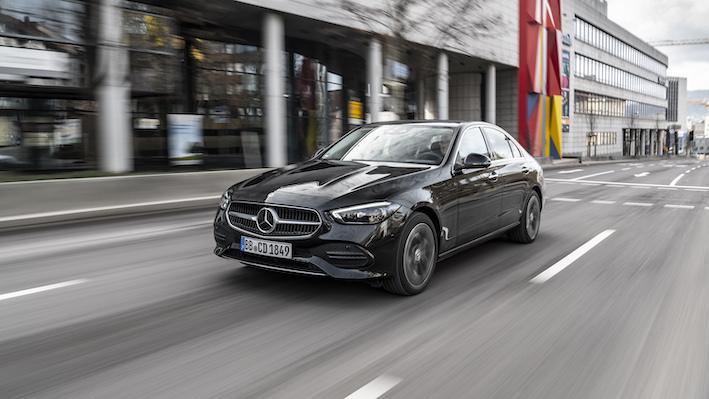
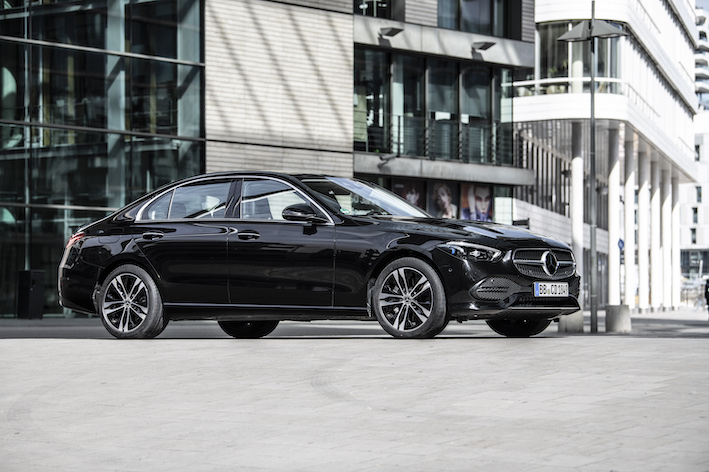
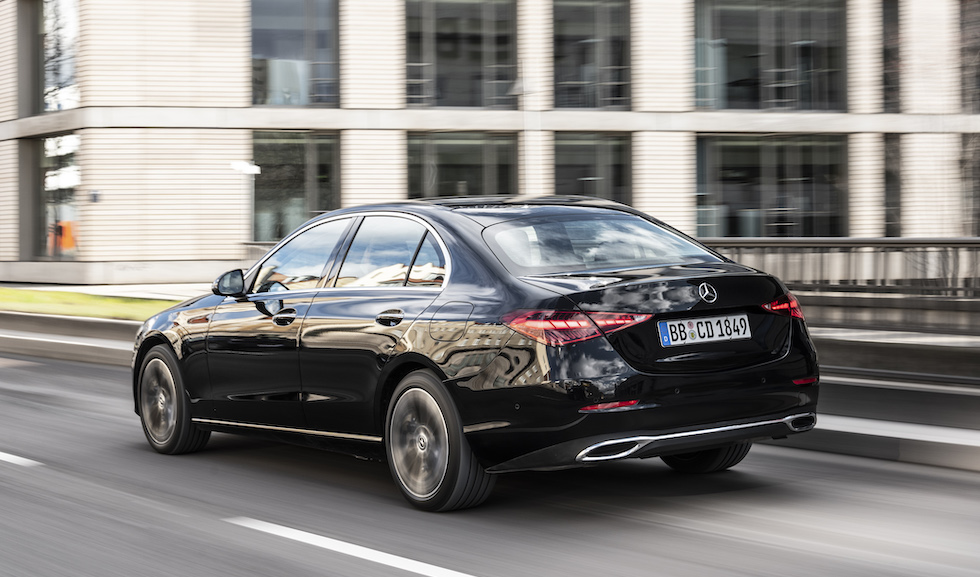
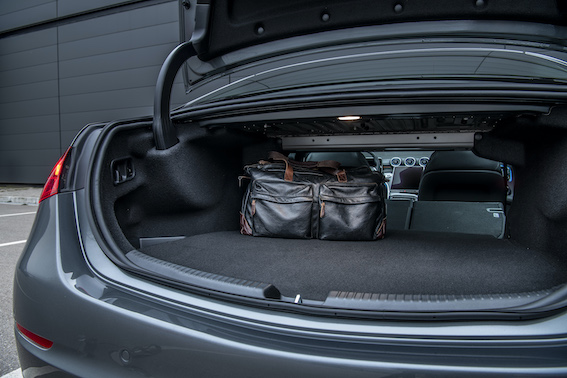
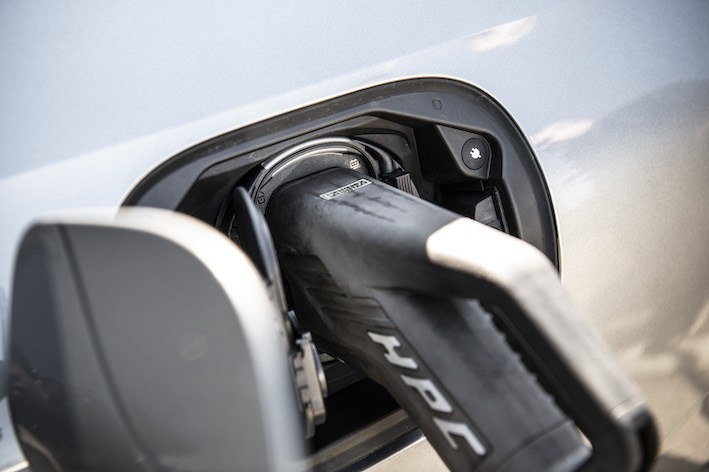
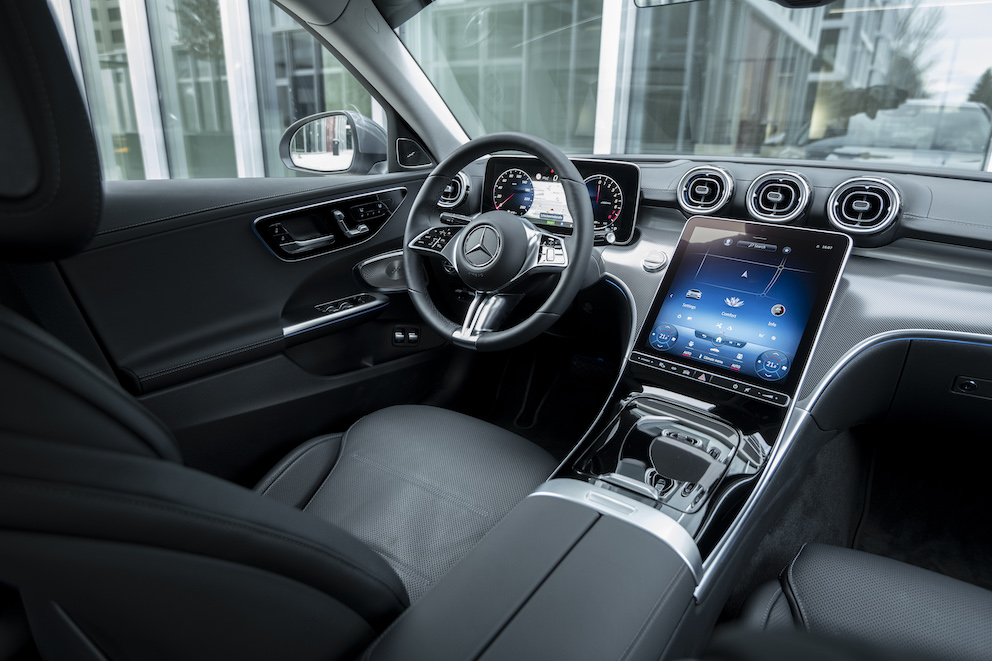



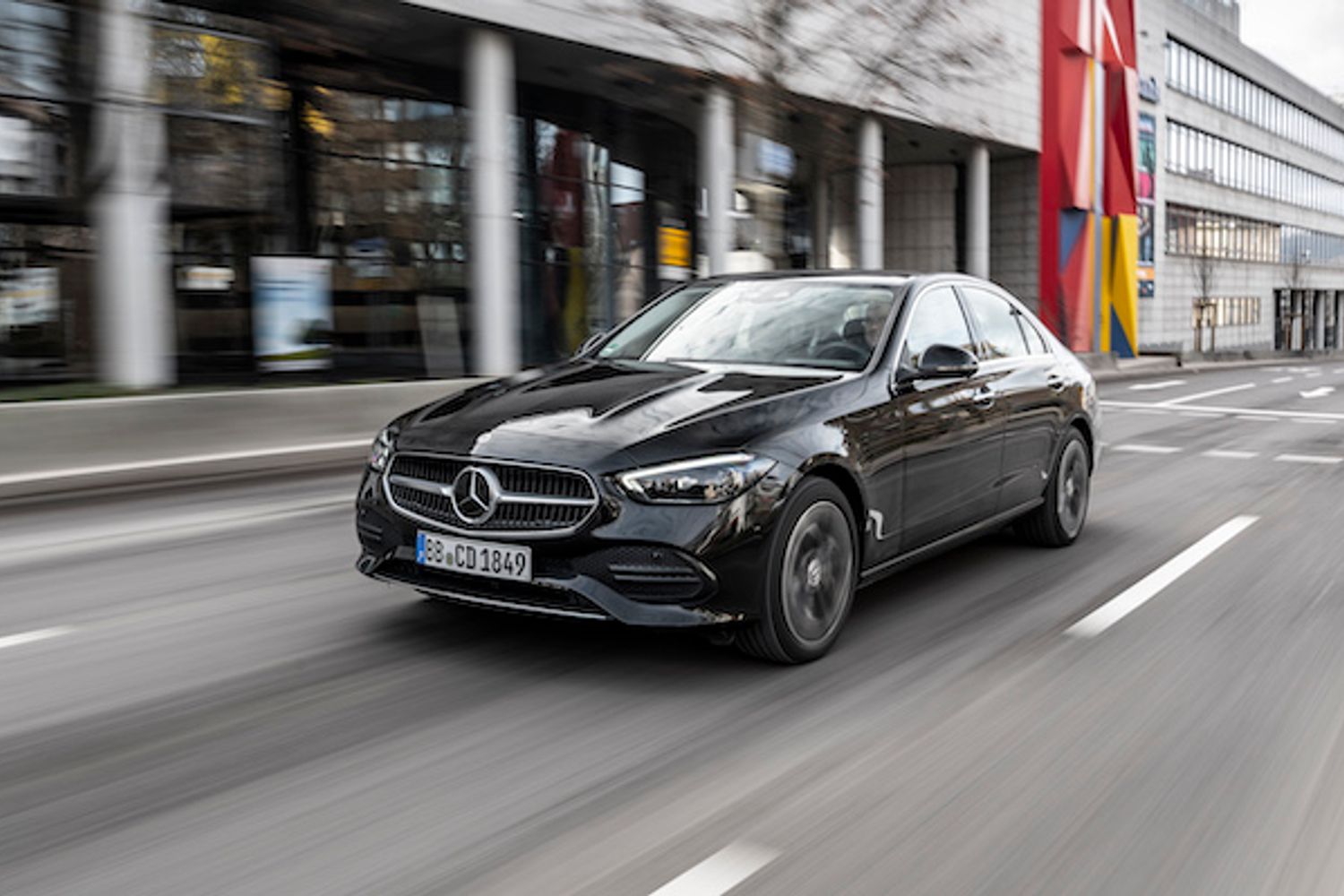

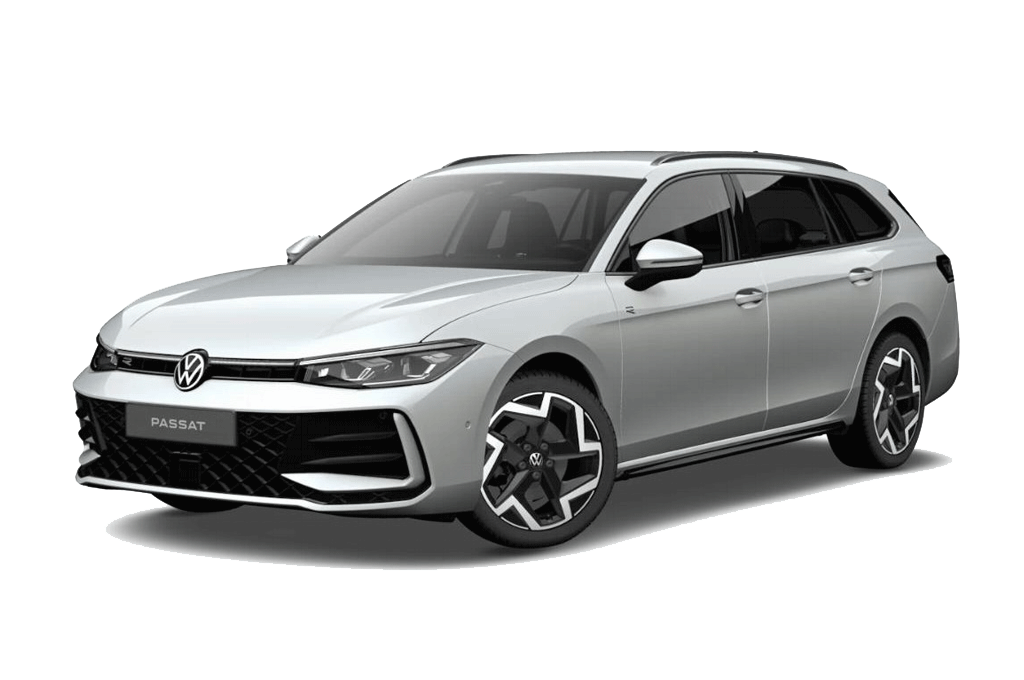



 PV5_Cargo_Key visual image_2.png?width=300&height=185)


